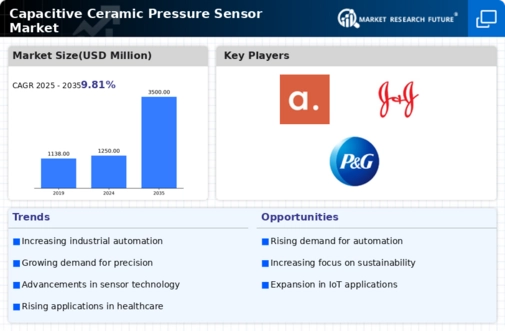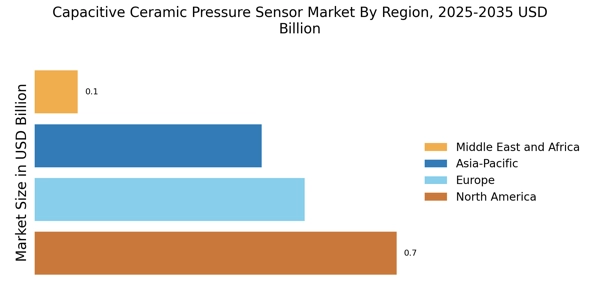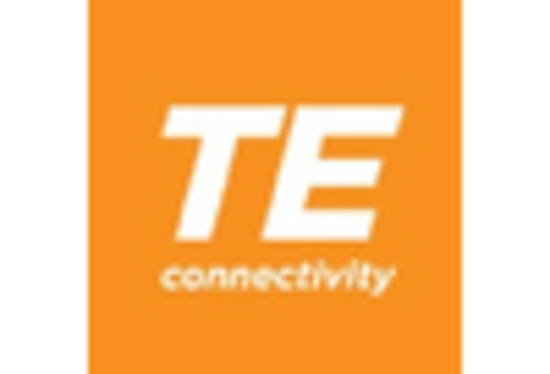The Capacitive Ceramic Pressure Sensor Market is currently characterized by a dynamic competitive landscape, driven by technological advancements and increasing demand across various sectors, including automotive, aerospace, and industrial automation. Key players such as Honeywell (US), Siemens (DE), and Emerson (US) are strategically positioned to leverage their extensive research and development capabilities, focusing on innovation and product differentiation. These companies are not only enhancing their product offerings but are also exploring mergers and acquisitions to consolidate their market presence and expand their technological capabilities, thereby shaping a competitive environment that is increasingly focused on high-performance solutions.
In terms of business tactics, companies are localizing manufacturing to reduce costs and improve supply chain efficiency. This approach is particularly evident in the Capacitive Ceramic Pressure Sensor Market, which appears to be moderately fragmented, with several players vying for market share. The collective influence of these key players is significant, as they engage in strategic partnerships and collaborations to enhance their operational capabilities and market reach, ultimately fostering a more competitive structure.
In August 2025, Honeywell (US) announced the launch of a new line of capacitive ceramic pressure sensors designed for harsh environments, which is expected to enhance their product portfolio significantly. This strategic move not only underscores Honeywell's commitment to innovation but also positions the company to capture a larger share of the industrial automation market, where reliability and performance are paramount. The introduction of these sensors is likely to attract new customers and strengthen existing relationships with key clients.
Similarly, in July 2025, Siemens (DE) expanded its manufacturing capabilities in Europe by investing in advanced production technologies for capacitive sensors. This investment reflects Siemens' strategy to enhance operational efficiency and meet the growing demand for high-precision sensors in various applications. By modernizing its production facilities, Siemens aims to improve product quality and reduce lead times, thereby gaining a competitive edge in the market.
Moreover, in September 2025, Emerson (US) entered into a strategic partnership with a leading technology firm to integrate AI capabilities into its pressure sensor products. This collaboration is poised to enhance the functionality of Emerson's sensors, enabling predictive maintenance and real-time monitoring. Such advancements are indicative of a broader trend towards digitalization in the industry, where companies are increasingly leveraging technology to provide smarter solutions to their customers.
As of October 2025, the competitive trends in the Capacitive Ceramic Pressure Sensor Market are heavily influenced by digitalization, sustainability, and the integration of artificial intelligence. Strategic alliances are becoming more prevalent, as companies recognize the need to collaborate to stay ahead in a rapidly evolving landscape. Looking forward, competitive differentiation is likely to shift from traditional price-based competition to a focus on innovation, technological advancements, and supply chain reliability, as companies strive to meet the demands of an increasingly sophisticated market.

















Leave a Comment